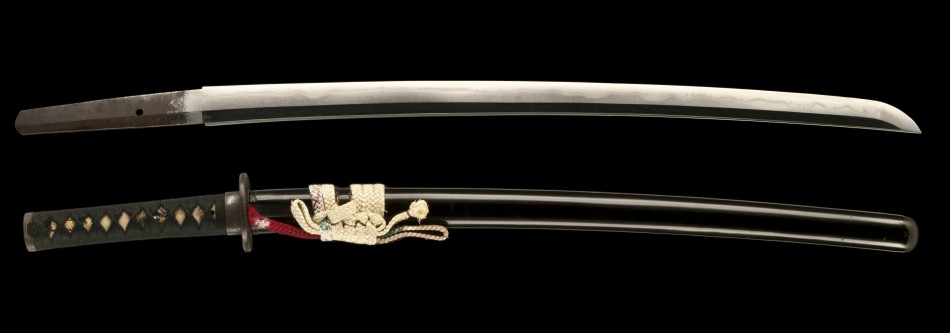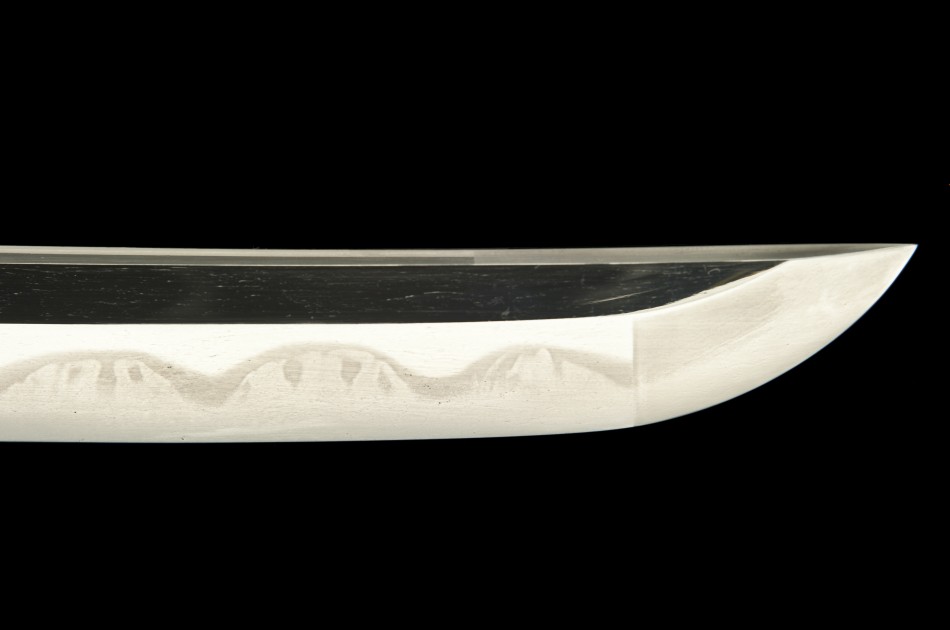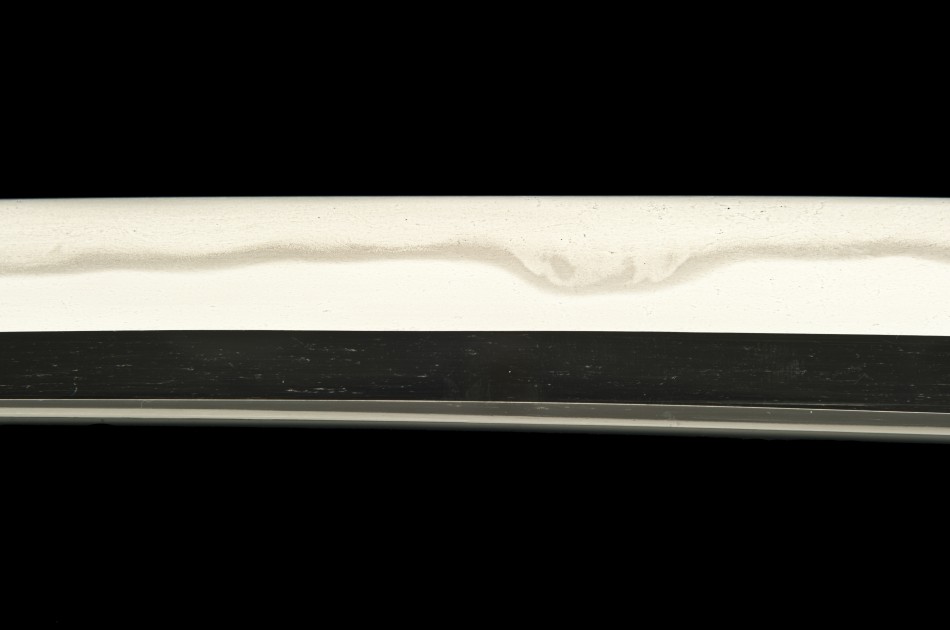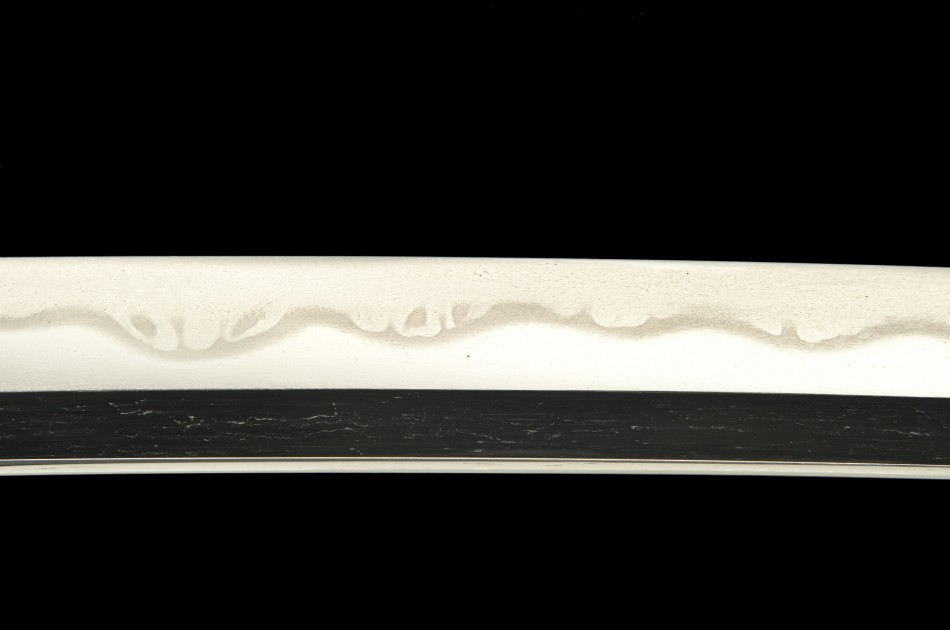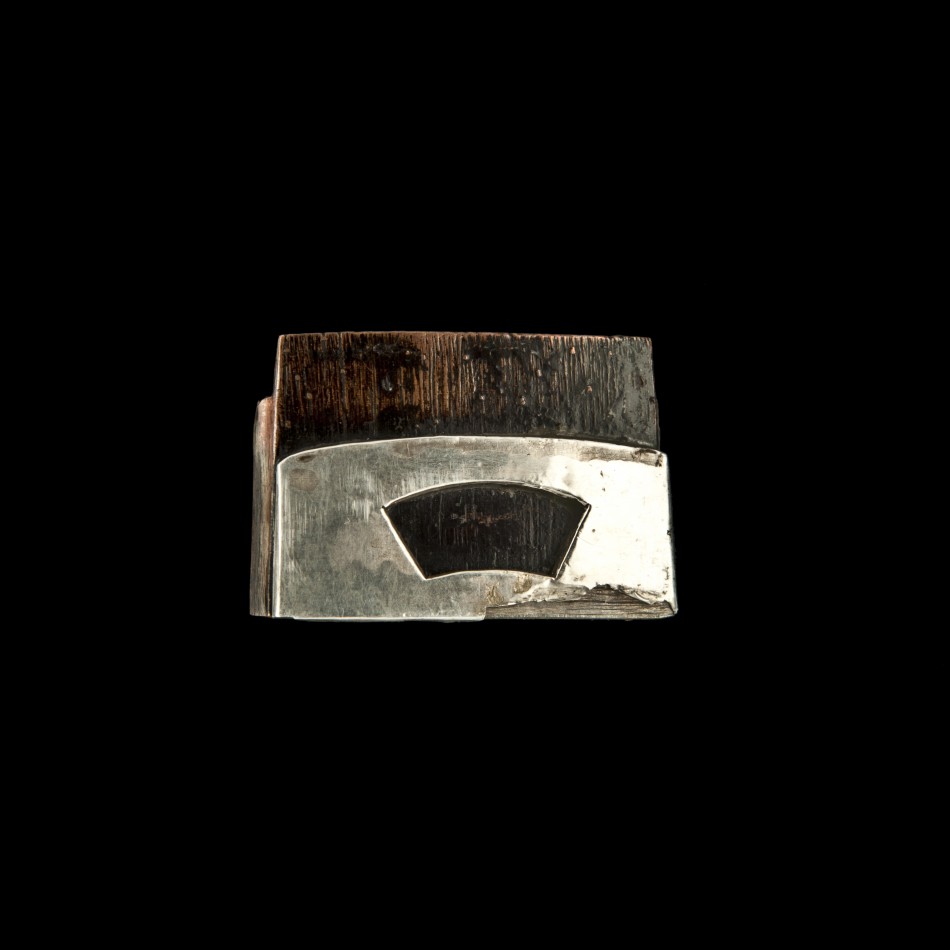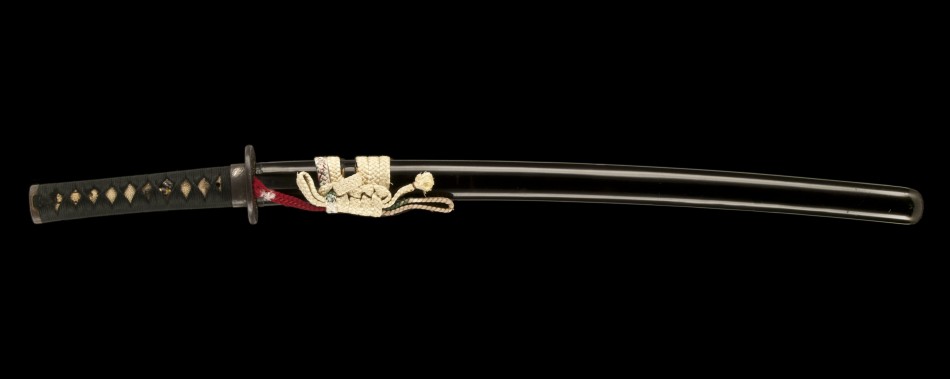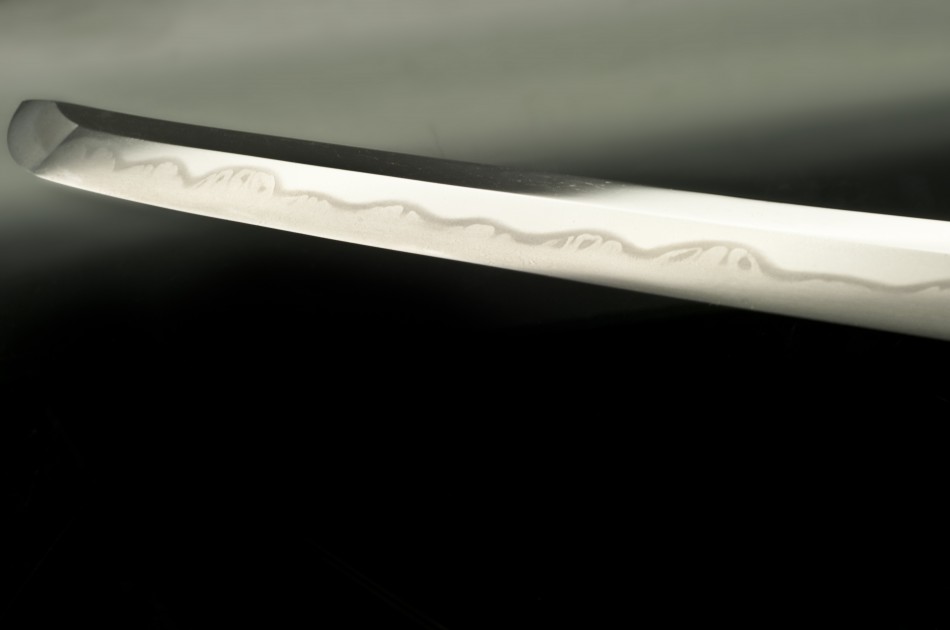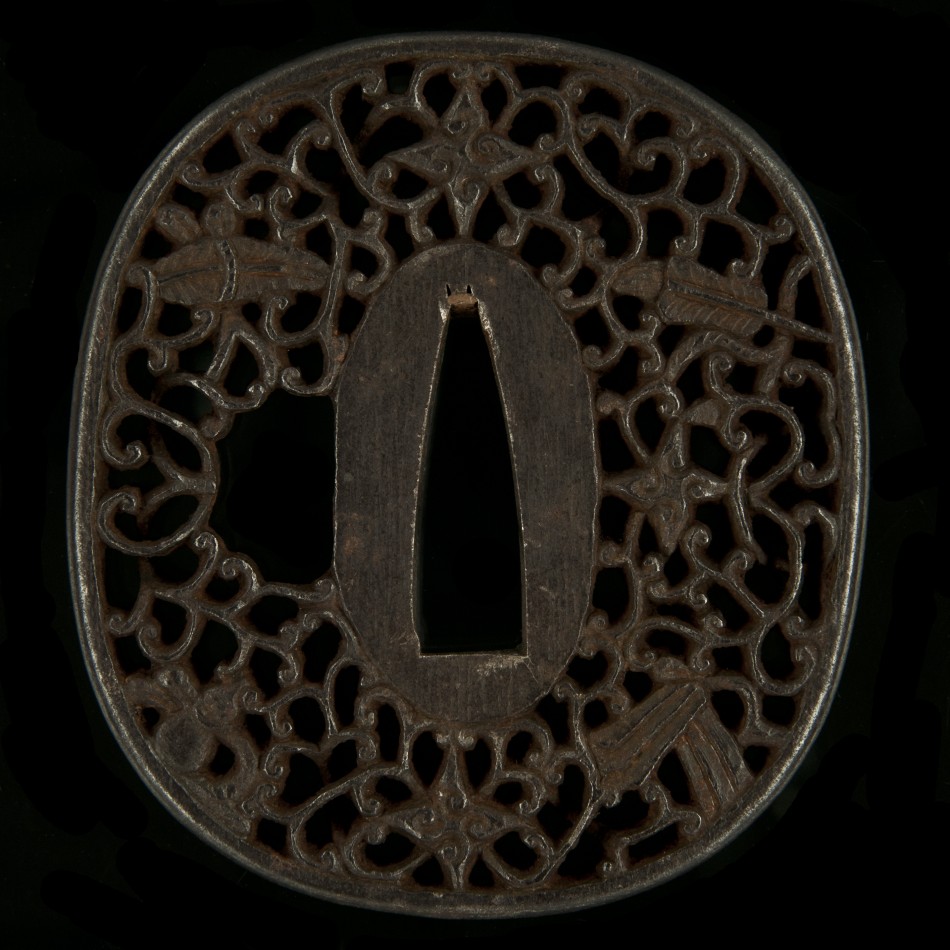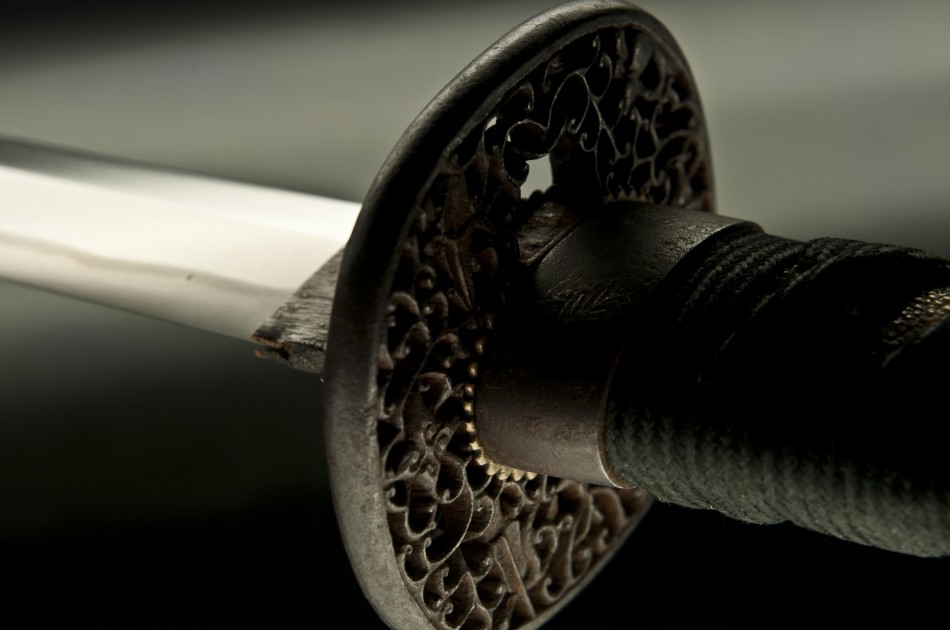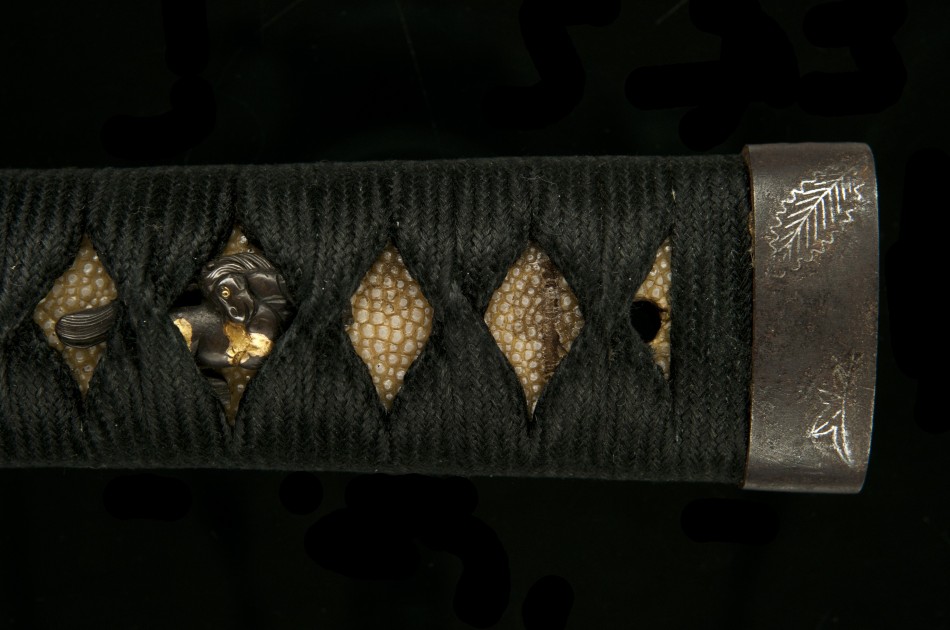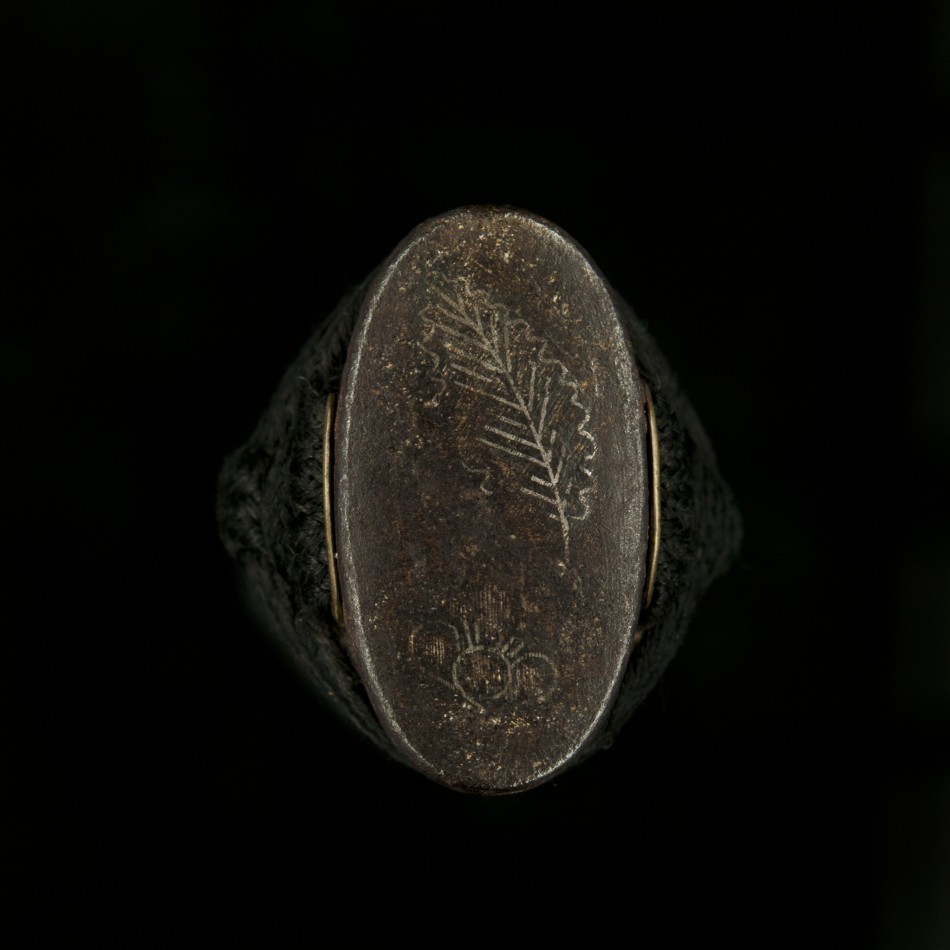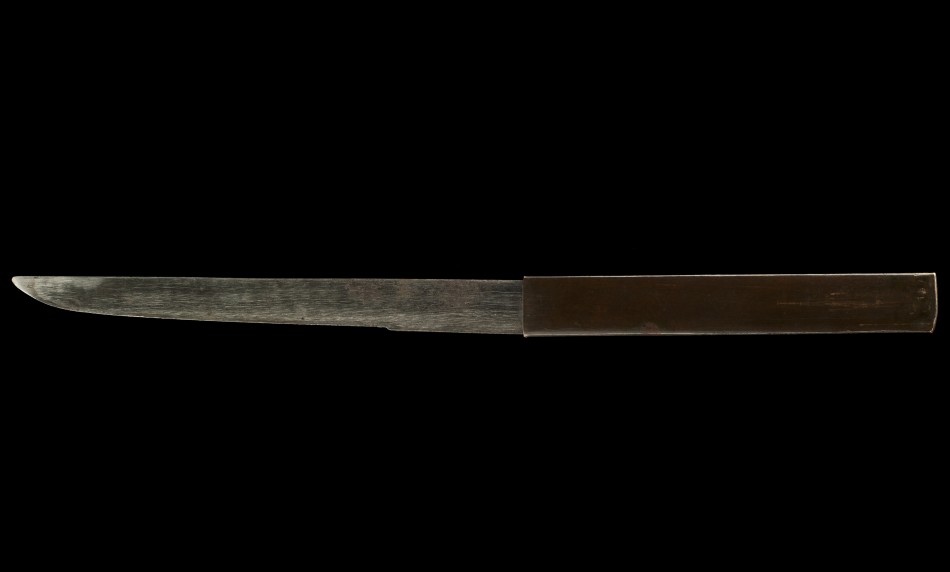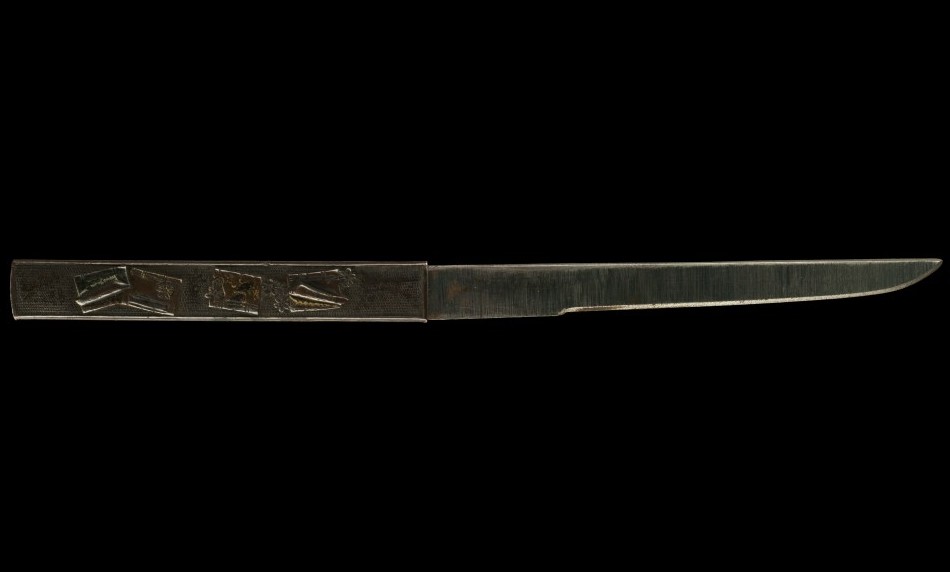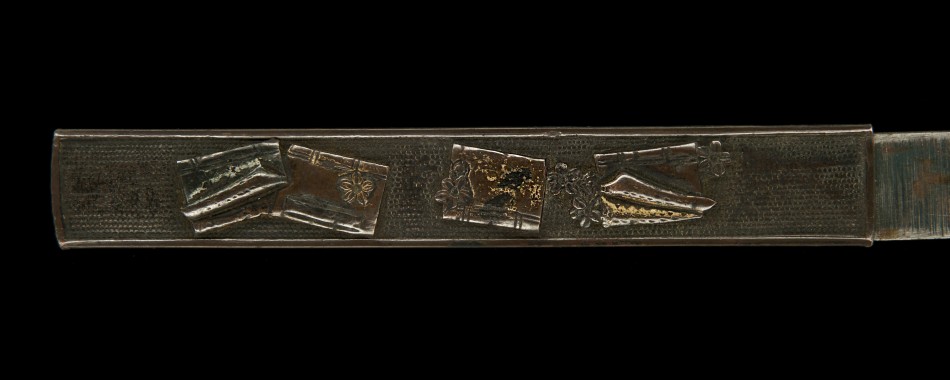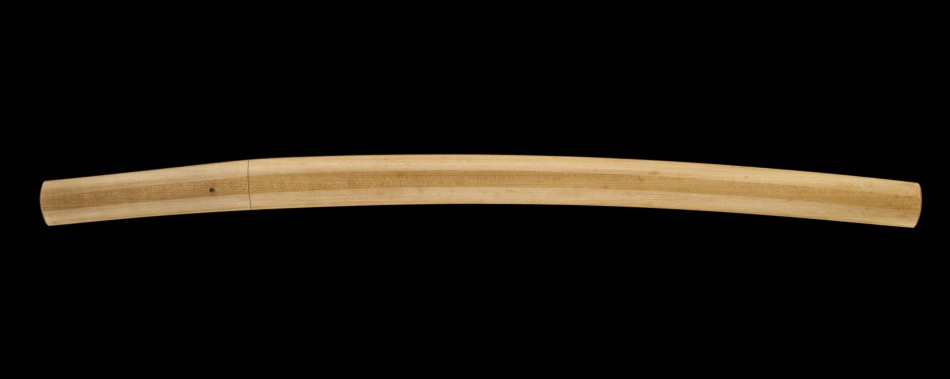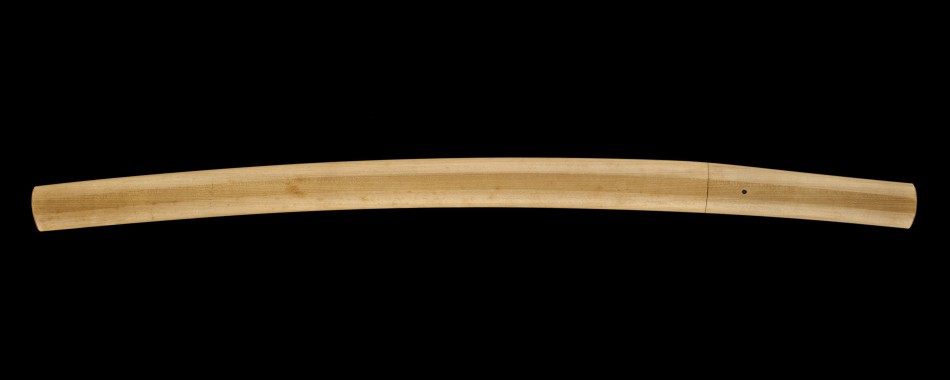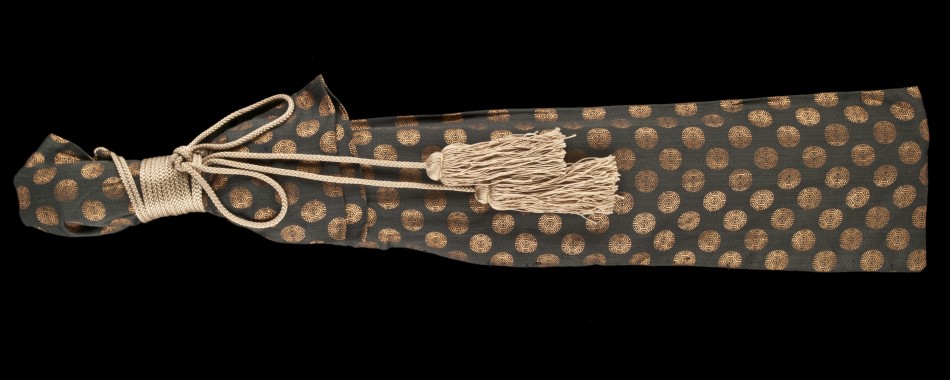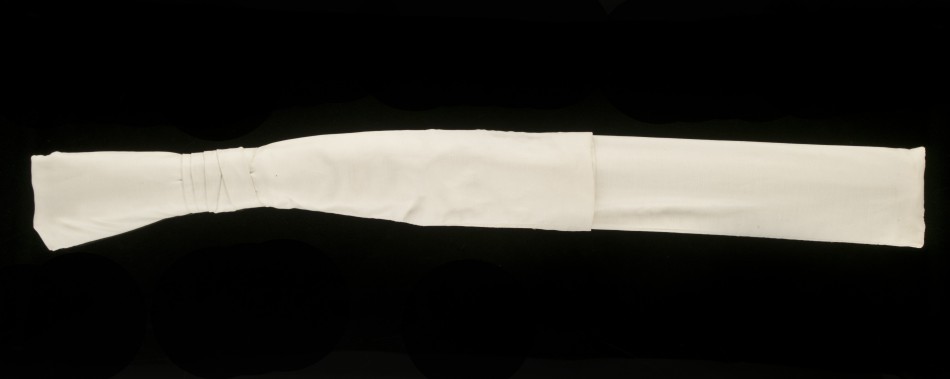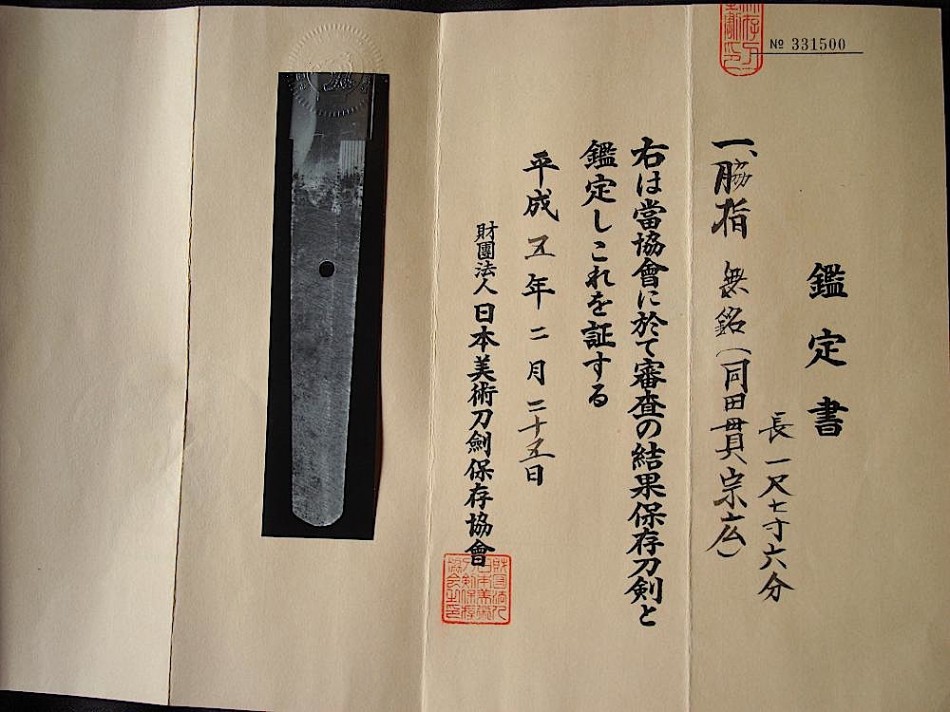A DOTANUKI CRAB CLAW O-WAKIZASHI
This sword was sold at the Okinawa Sword Show IV
Overview (full text description follows photos)
Type: O-Wakizashi (Unsigned Long Wakizashi)
Item No.: ujwa039
Swordsmith: Dotanuki Munehiro (同田貫宗広)
Period: Edo Period Tempo era (1830~1843)
Location: Higo no Kuni (Kumamoto prefecture)
Length: 53.6cm
Curvature: 1.2cm
Hamon: Kani-tsume-ba midare (wave temper line with crab claws)
Koshirae: Full koshirae mounting with shirasaya scabbard to better preserve the blade
Certification: NBTHK Hozon (A sword designated worthy of conserving by the Society for the Preservation of Japanese Art Swords)
Included: Hozon certificate, koshirae (mountings), shirasaya scabbard, traditional katana carry bag, sword maintenance kit, illustrated maintenance guide, sword stand, full exportation support to send sword to home country
This sword has been sold.
Photos (click for larger view)
*All photos taken professionally by Eric Bossick for Unique Japan
Blessed with a spectacularly artistic hamon (temper line) known as “‘kani-tsume-ba midare“, meaning “wavy temper line with crab claws“
Crabs are symbolic of the great Ninja warriors for they both move sideways, silently approaching their target…
A very uniquely designed habaki with the shape of a Japanese fan (sensu)
Gold inlay on one side (above), silver on the other (below)
A splendid Edo-period koshirae (mounting) that features a kozuka (utility knife)
All elements of the koshirae match which is a distinguishing feature
A closer look at this very rare temper line (hamon).
Only the very best swordsmiths could manage a living in the 19th century working directly for great Daimyo families
Complimenting this magnificent piece is a fabulously ornate tsuba (guard) that is made from “Nanban tetsu“, or “foreign-made steel“, which was generally imported from Portuguese, Dutch or Spanish sailors in small amounts.
Above: A spectacular horse gallops and providing grip for the Samurai
The Samurai revered the horse for her stamina, beauty and elegance
Notice the matching leaf designs on the tsuba, fuchi and kashira signifying healthy and prosperity
The sword is blessed with a Samurai utility knife (kozuka). The design depicts the “Three Worthies” or “Three Friends”: pine, bamboo, and plum. The pine symbolizes endurance and longevity, the bamboo reflects strength and flexibility, and the plum evokes purity of character.
A quality shirasaya (magnolia wood scabbard) houses the sword when mounted to best protect the blade
Above: The decorative silk carry bag for the koshirae mounting
Below: The silk carry bag for the shirasaya
Below: The sword’s NBTHK Hozon certificate (A sword designated worthy of conserving by the Society for the Preservation of the Japan Art Sword)
Description:
Blessed with a spectacularly artistic hamon (temper line) known as “‘kani-tsume-ba midare“, meaning wavy temper line with crab claws, this wakizashi is unique in so many ways.
Crabs are symbolic of the great Ninja warriors for they both move sideways, silently approaching their target…
Pockets of rich nie (visible crystals) form an energetic wave splashing the length of the blade.
The Dotanuki school was located in Higo no Kuni, which is modern day Kumamoto prefecture in Kyushu. The school has roots that can be traced to the Enju school from as far back as the Kamukura era (14th century).
Kyushu has always had a fine reputation for making quality swords. Dotanuki was ranked as Wazamono (maker of swords that cut especially well).
As this sword is unsigned, it would have almost certainly been made directly for the Kikuchi-clan Gozoku family. The very ornate koshirae (mounting) is testament to the demanding standards of quality expected from a family with status.
Gozoku is a Japanese term used to refer to powerful and wealthy families in Feudal Japan (1185-1868) that had significant holdings of land.
It is fascinating to note that this sword was made during what is now referred to as the infamous “Tempo Reforms (天保の改革)“.
These reforms were an array of economic policies introduced in 1842 by the Tokugawa Shogunate in Japan. These reforms were efforts to resolve perceived problems in military, economic, agricultural, financial and religious systems.
The changes were intended to address a more broad feeling of “domestic uneasiness.” The perceived need for change led to the arrest of many prominent political figures and writers. The reforms became a precursor of reforms initiated after the Meiji Restoration (1868) two decades later.
Complimenting this magnificent piece is a fabulously ornate tsuba (guard) that is made from “Nanban tetsu“, or “foreign-made steel“, which was generally imported from Portuguese, Dutch or Spanish sailors in small amounts.
The detail of the tsuba is truly gorgeous and quite a collector’s piece in its own right. It also makes a most beautiful high-pitched ring, if suspended like a wind chime.
Notice how the leaves on the tsuba matches the silver fuchi (collar) and silver kashira (pommel)? This is a set of matching koshirae from the Edo-period that has not been disturbed for about 160 years!
And yet another piece of treasure important to point out is the lovely handcrafted horse captured in the menuki (eyelets under the silk handle). The Samurai revered the horse for her stamina, beauty and elegance.
There is even a uniquely decorated kozuka (paper knife) that comes fastened on the saya (scabbard). The kozuka depicts the “Three Worthies” or “Three Friends”: pine, bamboo, and plum. The pine symbolizes endurance and longevity, the bamboo reflects strength and flexibility, and the plum evokes purity of character.
This sword has achieved a very well-deserved NBTHK Hozon certification, a sword worthy of preservation by the Society for the Preservation of the Japan Art Sword.
This is a highly collectible sword from a most interesting time in Japanese history that I wholeheartedly recommend. You can be most proud of this very well-priced investment. PK
Special Gift
As a special gift for the customer who purchases this beautiful wakizashi directly with Unique Japan, WE WILL INCLUDE AN ENGRAVED 3-PIECE SET OF OUR KUROMORI KITCHEN KNIVES OR OYAMA KITCHEN KNIVES. OR 50% OFF the R4 DAMASCUS KITCHEN KNIVES.
Questions?
To request further information or secure immediate ownership of this sword, please email me, Pablo Kuntz.
For steps toward ownership including all payment options, visit 5 Easy Steps to Owning an Authentic Japanese Samurai Sword.
ALL SAMURAI SWORDS from Unique Japan are GUARANTEED AUTHENTIC and come with a 3-DAY WORRY FREE Inspection Period.
Upcoming Sword Shows
If you have the pleasure of living in Japan or visiting the country, we strongly recommend that you come to one of our upcoming sword shows.
At each show, we have dozens of beautiful Japanese swords to you to discover and secure for your immediate ownership.
If you cannot make it to a show, but you see something you would like to own from our website please contact me for purchase inquiries.
Legal Exportation from Japan
Unique Japan has safely sent dozens of swords from Japan to countries all over the world. All legal exportation paperwork is included with every purchase. Please allow about 4 weeks for us to process and ship an order from Japan.



